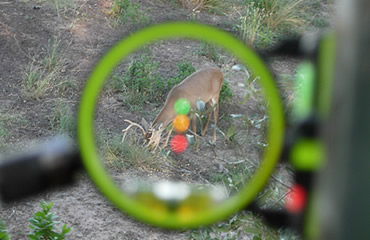It doesn't matter how much you practice or how selective you are with your shots, sooner or later you are going to make a bad hit. Gun, bow or muzzleloader, things happen in the deer woods beyond our control. While a bad hit is inevitable, losing your deer isn't. Most wounded deer will bed down within a few hundred yards of where they were hit. Once pushed from that bed, however, there's no telling how far the deer will go.
What you do in the minutes immediately following a bad hit is critical. First, WATCH -- keep your eye on the deer. The second you lose sight of it, pick out a landmark and etch that landmark in your mind. Next, LISTEN -- try to hear if the deer changes direction from where you last saw it. Also listen for a crash that could signal that the deer went down. Lastly, if you're sure you made a bad hit, leave the woods to GET HELP. Do NOT go to look for the deer.
If you are bowhunting and know where the arrow should be, it is okay to look for the arrow if doing so will not disturb your deer. The arrow might give you key information on the type of hit. The most important thing to keep in mind is to not push the deer from its first (and hopefully last) bed.
Most hunters cannot fight the urge to go looking for their deer, especially a big buck, after a bad hit. While these same hunters realize they need to back off once they've pushed the deer from its bed, the mistake has already been made. You have a much better chance of finding your deer if you let it alone right after the hit.
Note: while a bad hit is going to happen to everyone, proper practice and good shot selection will help keep those bad shots few and far between. While you can't stop a deer from taking a step just as you shoot, there's no excuse for not being proficient with your weapon of choice.
Read Recent Tip of the Week:
• How To Determine Eye Dominance and Deal with Cross Dominance: What is eye dominance? In short, it’s the eye that your brain prefers.




.png)